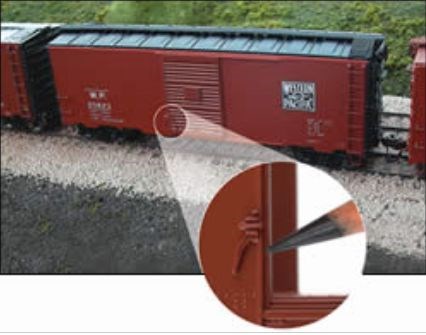Confessions of a Rivet Counter
Manufacturers must pay attention to detail because their customers do.
Share



Hwacheon Machinery America, Inc.
Featured Content
View More





Manufacturers must pay attention to detail because their customers do.
Every year in late October, I take my portable, modular HO-scale (1:87) trolley layout to the local model train show. The layout is a highly-detailed diorama depicting a Cincinnati neighborhood in the 1930s and ‘40s, when the city’s streetcar lines were still running. I pride myself on being very faithful “to the prototype.” The model houses, storefronts and operating trolley cars have to be very authentic. They must look exactly like the real-world buildings and vehicles that the models are meant to represent.
In the hobby, purists like me are sometimes derisively called “rivet counters.” I buy only kits and model products that are right for the era and locale that I depict on my layout, to the point that I truly do want details such as the number of rivets on the model streetcars to match that of the full-sized version. However, I understand better than most of my fellow hobbyists what a challenge this creates for manufacturers. When I study a ready-to-run model or the plastic pieces in a put-together kit, I can envision the complex CNC machining needed to make the mold or the EDM electrode used to “burn” its extremely fine and accurate detail. This insight adds another level to my enjoyment of the hobby.
So it was particularly gratifying for me to write about the machining operations at Branchline Trains, one of the leading manufacturers of model railroad products, a few years ago. Here was an opportunity for my professional career to converge with my avid pastime interests. Just as an understanding of machining processes makes the hobby more fun for me, and my understanding of the hobby likewise heightened my appreciation for this shop’s capability. The result, I believe, is a more compelling article.
Titled “Main Stream Technology Keeps Shop on Track,” the article talks about the challenges of high speed machining and advanced CNC programming, a discussion that remains valid today. The larger point of the article is still a critical issue, too: Ultimately, manufacturing technology must serve the demands of customers, especially the fussy ones. If you can’t please us rivet-counters, your hold on the market is tenuous. We’re the ones that keep your business model on track.
See my layout on YouTube here.
Find the article about Branchline Trains here.



.png;maxWidth=150)


























.jpg;maxWidth=300;quality=90)





